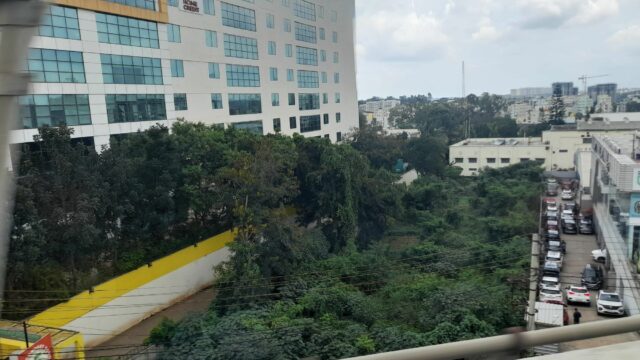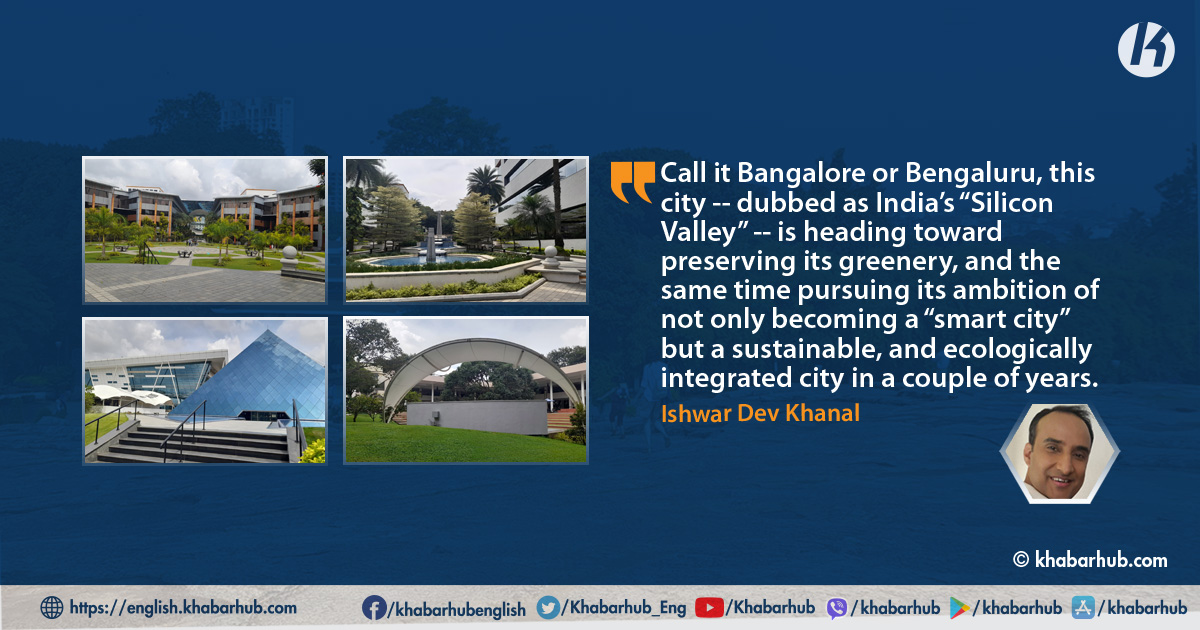KATHMANDU: As a saying goes: “Wars are much easier to start than to finish.”
This comes true for Bengaluru Smart City Limited Project as developing a Smart City is “not easy as defined” — meaning, that are challenges!
“Yes, there are challenges. But we are steadily moving ahead despite hindrances,” P Rajendra Cholan, Managing Director of the Bengaluru Smart City, told an interaction with a delegation of Nepali journalists, who visited India’s “Silicon Valley” recently.
Cholan says his organization “Bengaluru Smart City Limited Project” (BSCLP) is committed to making Bangalore a smart city that involves people’s hope and aspirations for a better future, a better living standard, better infrastructure facilities, and greenery, among others.
The greenery in the city evidently reflected his commitment to making Bangalore a green city (Garden City) where “people could breathe fresh air”.
“That’s not all,” he said, adding, “We want to ensure that the city with a population of 8.44 million (2011 census) is healthy, vibrant and connected.”
The Karnataka state government’s long-term plan is to develop Bengaluru by building metros, good roads, suburban rail, and satellite towns besides boosting literature, art, culture, sports and many more.
According to him, the BenSCL has prioritized road infrastructure, re-development of historical areas, integrated mobility, and Information Technology.
During the entire conversation, the officials looked optimistic and reflected seriousness in their words and commitments, not like the commitment of Bidya Sunder Shakya, the former Mayor of Kathmandu Metropolitan City.
To recall, Shakya repeatedly talked about making Kathmandu a smart city where there would be a mono-rail, metro rail, equipped with other modern facilities.
Ironically, the development of Nepal’s capital city, Kathmandu was at a snail’s pace during Shakya’s tenure.
While Shakya consistently came up with lame excuses called “challenges” during his five-year-long tenure, officials of Bengaluru Smart City take “challenges” as “nothing unusual” since they did not stop the work entirely even when the lockdown was in place during the Covid-19 pandemic.
“We brought in workers from other cities by air even during the lockdown,” he told Khabarhub.

However, this commitment lacked in Kathmandu since all construction work came to a grinding halt during the lockdown.
Furthermore, Bangalore, which is the fourth highest GDP in India (US$110), has developed itself as the “IT capital of India” because of its role as the nation’s leading information technology exporter.
“People are educated here, have higher knowledge, and have higher hopes and expectations,” he said, adding, “Therefore, there is a real challenge that would further drive us.”
Out of the 50 projects, the Bengaluru Smart City Limited Project has completed 13 projects at a total cost of IRs 108.49 crores, and 37 (IRs 913.35 crores) are in progress, according to the BSCLP.
One of the projects is the “Smart Tendersure Roads” which features wide sidewalks and segregated/shared bicycle track, pedestrians and bicycles prime-focussed design, public transport integration-redesigned bus bay, motor vehicles – uniform travel lane width with on-street parking bays, storm water drains, green buffers, landscape provisions on either side of the carriageways, among others.
Nepali popular journalist Poonam Poudel, who was also a part of the trip to Bangalore, said that she was surprised to see how Bengaluru was turning into an IT hub.
Recalling her previous visit to the city some 26 years ago, she said, “Hopefully on our next visit, we will be able to see Bengaluru a smart city.”
She added that she was impressed with the commitment of the authorities of the Bengaluru Smart City Limited Project to develop the city.
According to Cholan, the roads developed under the Smart Tendersure Roads model will have a “prime focus” on cyclists and pedestrians where the roads will also have wide sidewalks along with what has been called a “dedicated utility duct” for stormwater drains, sewer, power, and other services.
Meanwhile, in order to get rid of parking congestion in Gandhi Bazar (one of the oldest and busiest market areas in Bangalore), it is also building a multi-level car parking (at a total cost of IRs 18.76 crores) that accommodates 128 four-wheelers.
The projects are in fact a scheme that meets the aspirations of the people, which means that the people of the city are benefitted. Kathmandu, too, can learn from such cities by developing urban ecosystems through various sides of comprehensive development.
Merely, dismantling temporary structures (as what the Kathmandu Metropolitan City is doing currently) is not the solution. “Involving people before identifying the problems is a must,” Cholan said.

It should also be noted that Bengaluru is one of the Indian cities to have been awarded the title of “India’s top 11 cycling pioneers” to scale up cycling initiatives.
Instead, KMC authorities and the government need to identify the priorities, and the requirements for a smart, sustainable, and ecologically integrated city.
Back in 2015-16, the Government of Nepal even unveiled a budget envisaging developed, modern, and green and information technology-friendly smart cities, including Kathmandu.
The government has planned to develop as many as 20 modern cities and three smart and green cities. The projects seem to be moving at a snail’s pace.
In 2018, the Asia Pacific Peace and Development Service Alliance organized a conference “Smart and Green Cities” in Kathmandu in partnership with IBM and the Chaudhary Foundation and other organizations. However, the implementation part has not been effective.
Here, what has to be understood is that a smart city does not refer to skyscrapers or tall structures.
It is all about an overall development of a city that ensures sustainability and robust technology, quality urban services, resource consumption, and engages people effectively.
Will Kathmandu, which faces an array of challenges like pollution, water scarcity, flooding, traffic, and waste mismanagement able to follow in the footsteps of Bangalore?








Comment